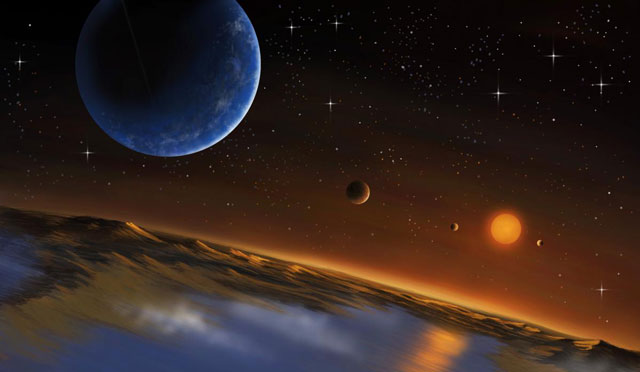
Twenty years ago, we thought that the solar system, with its collection of planets — which then included now-demoted Pluto — was unique. But in the past few years, new data, aided by planet-hunting spacecraft Kepler, has shown that, not only are there billions of planets in the universe, in the Milky Way they are also the rule rather than the exception.
To date, nine planets have been identified that could support life, with the closest being 22 light years away. A light year is the distance light can travel in one year, which is just under a trillion kilometres.
Habitable planets occur in an area called the “Goldilocks zone”, which is where the planet is neither too close nor too far away from its parent star. The reason that the Earth has carbon-based life is because it is the right distance from the sun to have liquid water: if it was closer, the water would evaporate, and if it was further away, it would freeze.
A team of astronomers, led by Dr Jayne Birkby of Leiden University in the Netherlands, has found a way to detect the distinctive footprint of water in distant planets’ atmospheres, using spectral lines.
Gases emit light at a particular frequency, and this frequency can be detected in the form of spectral lines.
The astronomers used the European Southern Observatory’s Very Large Telescope in Chile, which is so sensitive that it could detect a car’s headlights on the moon.
“Scientists were able to find the simple molecule carbon monoxide in the atmosphere of [a planet], but this is the first time it has been used to identify a more complex molecule like water,” the Royal Astronomy Society said. Birkby presented her team’s findings at the society’s national astronomy meeting in Scotland on 5 July.
“The detection means that the door is now open for a much more detailed census of the chemical make-up of many other exoplanet atmospheres, including molecules such as methane and carbon dioxide, which are key ingredients for unravelling a planet’s formation history,” the society said.
Speaking to the Mail & Guardian from the Netherlands, Birkby said: “We used the technique on several planets to look for carbon monoxide. This is the first time we looked for water. The plan is to look for water on other planets, in the form of water vapour.”
She said that the Earth has water vapour in its atmosphere in the form of clouds, and that the astronomers would use this technique to find “earth analogues”.
“In the next decade, our work will help astronomers refine their search for Earth-like planets — and even life — in orbit around other stars. It’s incredibly exciting to think that in my lifetime we will reach a day when we can point up to a star and say with confidence that it has a world just like our own,” she said.
Last week, the search for habitable planets got another boost when astronomers discovered that a star called Gliese-667C had not one habitable planet orbiting it, as had been previously thought, but three. This took the number of confirmed habitable planets from seven to nine.
A team of astronomers, led by Guillem Anglada-Escudé of the University of Göttingen in Germany and Mikko Tuomi of the University of Hertfordshire in the UK, re-examined existing data about the star.
“We knew that the star had three planets from previous studies, so we wanted to see whether there were any more,” said Tuomi. “By adding some new observations and revisiting existing data we were able to confirm these three and confidently reveal several more. Finding three low-mass planets in the star’s habitable zone is very exciting.”
Co-author Rory Barnes, from the University of Washington, said: “The number of potentially habitable planets in our galaxy is much greater if we can expect to find several of them around each low-mass star — instead of looking at 10 stars to look for a single potentially habitable planet, we now know we can look at just one star and find several.”
- Visit the Mail & Guardian Online, the smart news source; follow author Sarah Wild on Twitter
- Image: Seti.org

